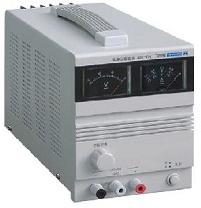What is a voltage divider
The voltage dividers are widelydistribution in electronics, because it is they that allow optimal solution of voltage regulation problems. There are various schematic solutions: from the simplest, for example, in some wall luminaires, to rather complicated ones, as in the control boards for switching the windings of the normalizers of the mains voltage.
What is a voltage divider? The wording is simple - it is a device that, depending on the transmission factor (it is adjusted separately), regulates the value of the output voltage relative to the input voltage.
Earlier on the shelves of shops it was often possibleto meet a lamp-sconce, designed for two lamps. Its peculiarity was that the lamps themselves were designed to operate at a voltage of 127 volts. At the same time, the whole system was connected to the household electric system with 220 V and quite successfully worked. No miracles! The thing is that the way of connecting the conductors was formed by nothing else than a voltage divider. Let's remember the fundamentals of electrical engineering, namely, parallel and serial connection of consumers. As is known, with a sequential method of switching on, the current is equal, and the voltage changes (remember Ohm's law). Therefore, in the example with a lamp, the same type of lamps are connected in series, which gives a decrease in the voltage supplying them by a factor of two (110 V). Also, the voltage divider can be found in a device that distributes the signal from one antenna to several TV sets. In fact, there are many examples.
Let's look at the simplest voltage dividerbased on two resistors R1 and R2. Resistances are connected in series, the input voltage U is applied to the free terminals. There is an additional terminal from the middle point of the conductor connecting the resistors. That is, three ends are obtained: two are external terminals (the total value of voltage U between them), and also the middle one, which forms U1 and U2.
We perform the calculation of the voltage divider,using Ohm's law. Since I = U / R, then U is the product of the current by the resistance. Accordingly, in the section with R1, the voltage will be U1, and for R2, U2. The current is equal to (serial connection). Considering the law for the complete chain, we get that the supply U is the sum U1 + U2.
What is the current under the given conditions? Generalizing the equations, we obtain:
I = U / (R1 + R2).
From here you can determine the voltage value (U exit) at the output of the divider (this can be either U1 or U2):
U exit = U * R2 / (R1 + R2).
For divisors with adjustable resistances, there are a number of important features that need to be considered both at the calculation stage and during operation.
First of all, such solutions can not be usedto adjust the voltage of powerful consumers. For example, in this way it is impossible to power the motor. One of the reasons is the values of the resistors themselves. Resistances per kilowatts, if they exist, are massive devices that dissipate an impressive part of the energy in the form of heat.
The value of the resistance of the connected load is notshould be less than the electrical resistance of the circuit of the divider itself, otherwise the entire system will need to be recalculated. Ideally, the difference R of the divider and the load R must be as large as possible. It is important to accurately select the values of R1 and R2, as inflated ratings will cause an excessive voltage drop, and underestimates will overheat, expending energy for heating.
When calculating a divisor,its current several times (for example, in 10) is greater than the amperage of the connected load. Further, knowing the current and voltage, calculate the total resistance (R1 + R2). Next on the tables, the nearest standard values of R1 and R2 are selected (taking into account their permissible power to avoid excessive heating).








